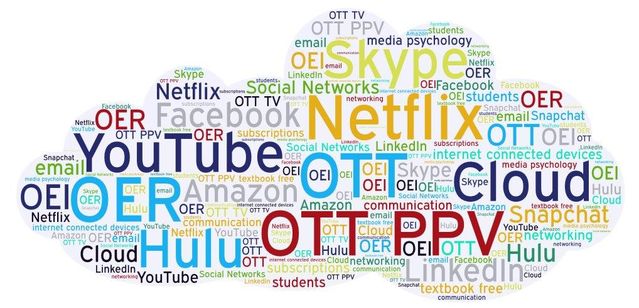2017 was a banner year for over-the-top video, and digital video in general. Paid OTT “skinny bundles” now have millions of subscribers, new niche entrants made their mark, and advanced video advertising continued to evolve and mature.
But now it’s 2018! We’ve asked subject matter experts in the OTT, ad tech and programming spaces to predict the big stories this year.
Data Matures
One common thread: 2018 will be the year data and targeting in the OTT space will mature, coming close to rivaling the data-rich environments of desktop and mobile. As more consumers embrace streaming video in their homes, more targeted ads can and will follow.
I think that today OTT is not a very data-based buy. You have got to be clever for advertisers about bringing in this data from other screens, to make targeting in television possible.
I think targeting against data in television — not just watching a view-through rate, that is not data-based targeting, or targeting 100,000 users, I am talking about advanced user, identity-based advertising, all of the things that had been present and available for desktop and mobile — will be available this year. “Data-based targeting will mature a significant number of notches in 2018. That will be what everybody will demand.”
“OTT ads will begin to make their way into linear viewing via smart ads leveraging real-time ACR [automatic content recognition] embedded in a rapidly increasing number of smartTVs. These ads are served into linear ad inventory as real-time overlay companions, or as dynamic replacements, and they can be targeted, measured and optimized with digital precision and granularity.
Brand safety will continue to be a topic of concern in 2018, but the discussion will transition into one of brand appropriateness — a more nuanced, sophisticated evaluation of what’s suitable for an individual brand. Contextual ad targeting will also make a comeback after advertisers discover the pitfalls of pure person-based targeting.
“Lasting concerns around brand safety/appropriateness are the main driver, but advertisers will also recognize that the right content environment drives higher performance for their ads, particularly when paired with ad creative that is optimized for each platform.”
Content And Brands Are King
The old adage “the more things change, the more they stay the same” will continue to ring true in 2018, at least when it comes to content. While consumers have more streaming video choices than ever before, ultimately quality and known quantities will win out.
We see consumer interest in [OTT offerings from both legacy companies and new entrants] for different reasons. There are legacy partners like People or Sports Illustrated, for example, who will find great interest from consumers because of the trust their brands stand for among their readers and viewers,” they add.
“But other players, like Poker Central’s PokerGo service — the team behind World Series of Poker — are seeing great results because they connect with a passionate, engaged audience and deliver them the best of what they want in the category. There’s great rationale for both, and we expect to see growth in both legacy and new vertically focused entrants in 2018.”
“In 2018 we’ll see the virtualization of television online. A lot of the newest, best content being developed is being distributed exclusively through online streaming.”
“If the content moves online, all the time spent watching TV programming will move online — and where all the eyeballs go, the ad dollars will follow.” It’s less a function of the user experience and more a function of the actual content. Whoever has the best content will win the advertising budgets, and right now the best content is online, not on TV.
A mainstream shift to OTT consumption and delivery stands to benefit the media companies that have the best premium content libraries (that is, Disney), and will [adversely affect] legacy distribution platforms still laden with costly, and increasingly antiquated, physical infrastructure — that is, smaller cable MSOs like Frontier.
Consumers will still bear the cost of content development and distribution in the form of subscription fees and ads, but at least the OTT era will inject more competition to build great digital products that people love to use, and develop or acquire a wider array of compelling premium content.
Disruption Rules
Even as the OTT marketplace matures, it will continue to be messy, as more new entrants pour in, companies grapple with the rollback of net neutrality, and as consumers choose winners and losers.
Traditional distribution channels have been disrupted to a point of radical evolution. What will be interesting to watch is how — or if — the new FCC rulings affect consumer behavior and industry growth trends.
The broadcast industry is in flux, driven by disruptive entrants to the market, rapid adoption of new technology and lack of engagement with youth audiences.
The transition to OTT video delivery requires a broadcast-quality experience across a challenging network infrastructure, putting the pressure on digital media providers to deliver a quality user experience across a wide array of mediums including TVs, tablets, and mobile phones. “In 2018, to support this growing demand, I expect to see digital media companies seeking out co-location data centers as a cost-efficient way to house data in a scalable infrastructure.”
“2018 will herald the great unbundling of video. Social video platforms will expand their footprint in the connected TV space, and the major players — like YouTube, Amazon, and Roku — that can successfully curate the right video publishers, streams, and networks will lead in shaping consumer choice and ad spend.
“Audiences will have more options than ever before to watch live video in the living room, and navigating all of these options will present new hurdles for marketers. But beyond those hurdles will lie significant opportunity for advertisers who take advantage of the new connected TV inventory available. The major challenge will be: How do you choose the right network or platform to reach the right consumers across the fragmented space?”

Leave a Reply